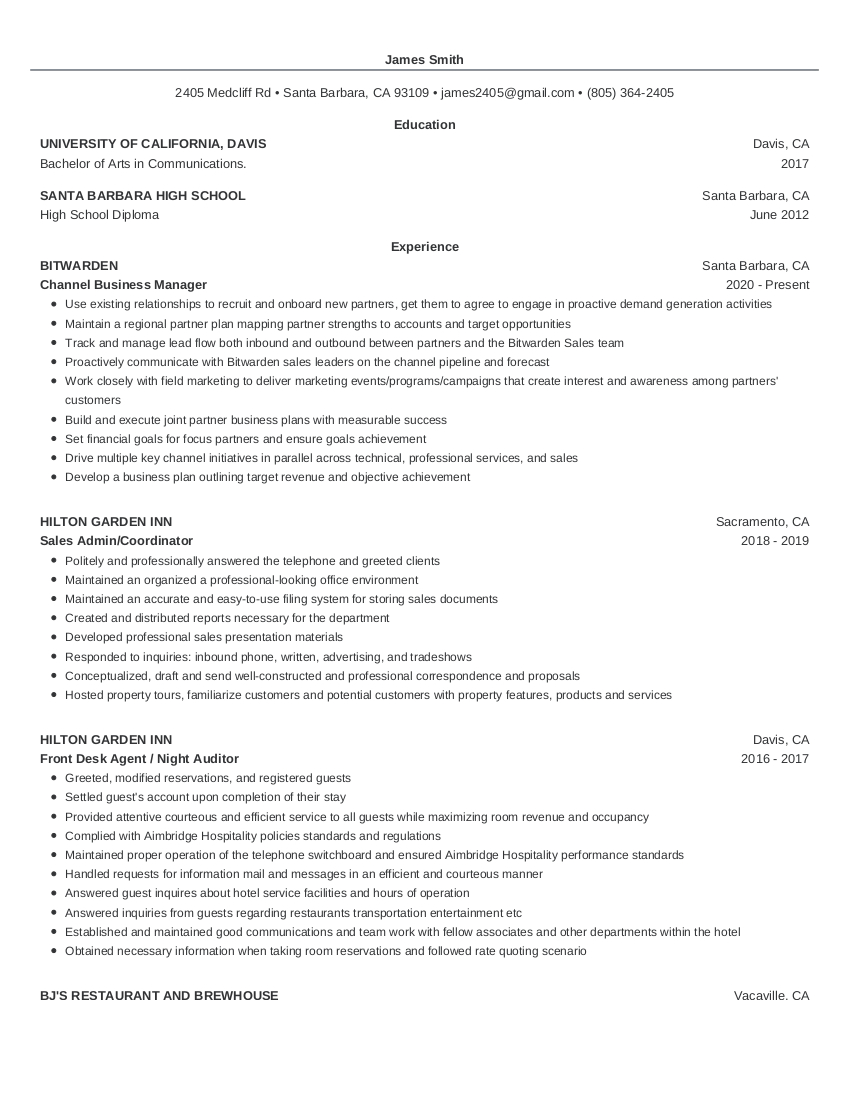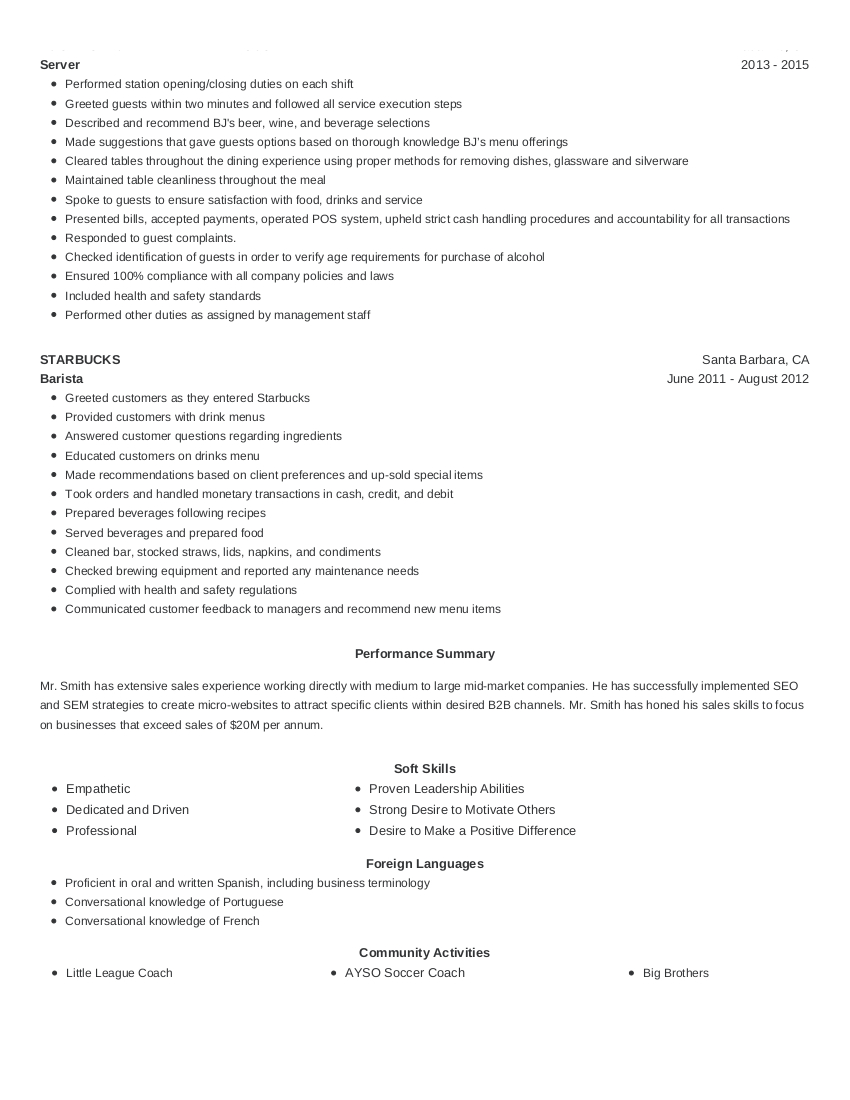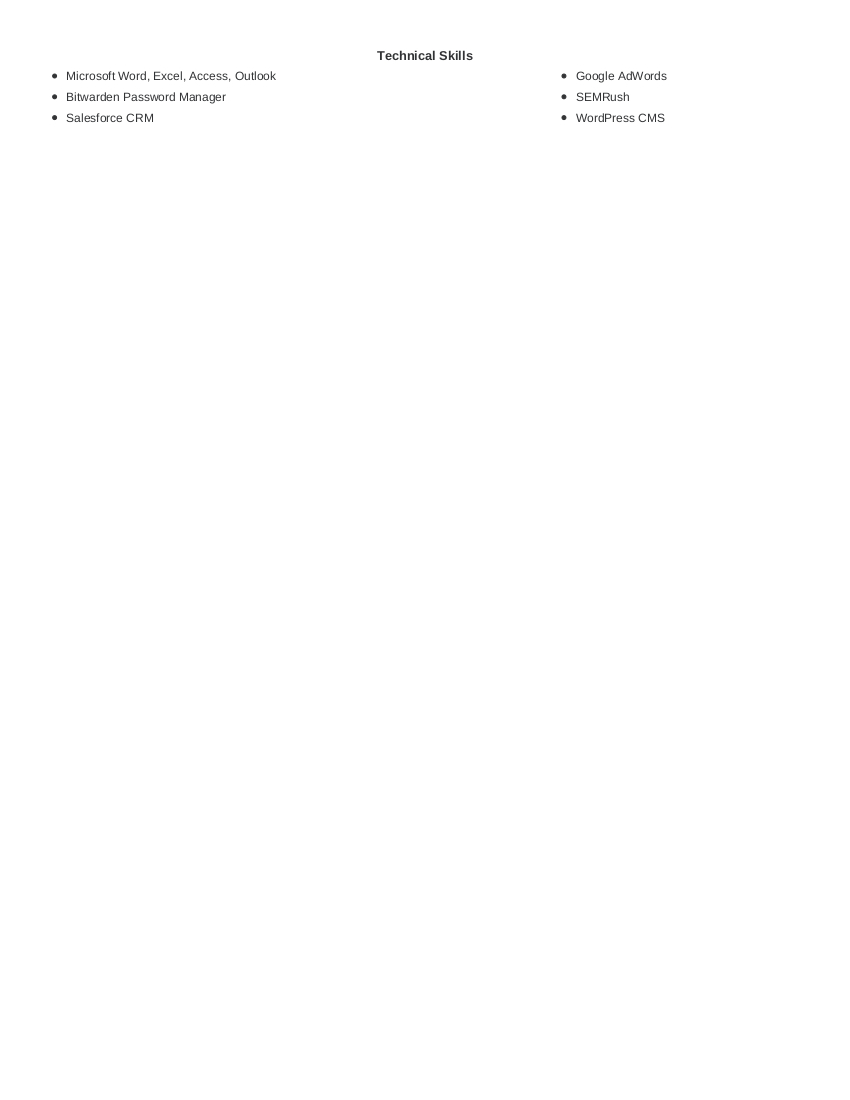How to Build a Simple Resume in 5 Steps
A solid resume comprises of five fundamental elements. Before crafting your resume, nail down these essential items. Many resume writers mistakenly search for pretty resume templates without considering what an extraordinary resume needs. Moreover, while it's tempting to sprinkle your document with superlatives, it's wise to use them judiciously to maintain credibility and avoid over embellishing your professional narrative.
-
Contact Information
Your contact information is paramount for many reasons. The obvious reason is that without accurate data, your future employer will not be able to provide you with an offer letter. Your contact information also signals to employers how likely you are to accept a job offer.
For instance, if you reside outside the state in which an employer is posting the job, it is less likely you will incur relocation expenses for a potential job. For this reason, you should apply to jobs with a local address or consider using a virtual private network (VPN) to mask your geolocation, making your application appear more local to potential employers.
However, please be aware that using a VPN to hide your location may be viewed as deceptive by some employers. Always ensure you're transparent during the interview process about your actual location and intentions.
If you are applying to a job outside your home country, make sure to format your telephone number so that it matches the target country's preferred style.
Information to Include:
- First and Last Name
- Address
- City
- Mobile Telephone
- Postal Code
-
Target Job
Provide the specific title of the position you want to acquire. It is important that you enter your desired role and not your existing title. This is especially important if you want to expand your responsibilities and command a higher salary.
-
Education
Education is straight forward. You should include academic degree programs, such as Bachelor of Arts, Bachelor of Science, Associate of Arts, or Associate of Science. You will also want to list advanced degrees such as Master of Arts, Master of Science, Doctor of Philosophy, or Doctor of Medicine.
Include both in-process and completed education. If you have extensive education, you should not include less relevant education, such as a high school diploma or certificate courses.
In this section, you should include honors and distinctions that help you stand out from other candidates. Include extracurricular activities relevant to your target job.
Information to Include:
- Institution Name
- Institution City
- Institution Country
- Institution State
- Degree (in progress or obtained)
- Completion Year (anticipated year if not completed)
- Major
Optional Information:
- Minor
- Overall GPA
- Major GPA
- Honors Received
- Extracurricular Activities
-
Professional Experience
This section is the most important part of your resume. You should spend the most time working on this section. Here, summarize your job duties, what was required to complete those duties, and how you exceeded expectations. Bullet points work well in this section. Although it is tempting to write multiple paragraphs for each entry, you want to keep each entry succinct.
Each professional experience added to your resume should be easily understood and demonstrate career growth. You should tailor your experiences to your target job. The target job should be a logical next step based on your work history.
It can be difficult to summarize work history. A great way to keep your entry on topic and succinct is to review the job description provided in the original job posting or offer letter. If you cannot locate those items, you can review job boards for current job descriptions.
-
Template/Layout
The final step is to select a resume template. The content you have written in the previous 4 steps will help determine if you select a chronological or functional template. A chronological template is an excellent choice for professionals in their mid to late career because the template demonstrates a clear progression through a job seeker's career.
A functional template is less focused on the chronology of education and work, and it emphasizes the quality of past employment. This template allows more physical space for a resume writer and should be selected for entries that are not easily condensed.


